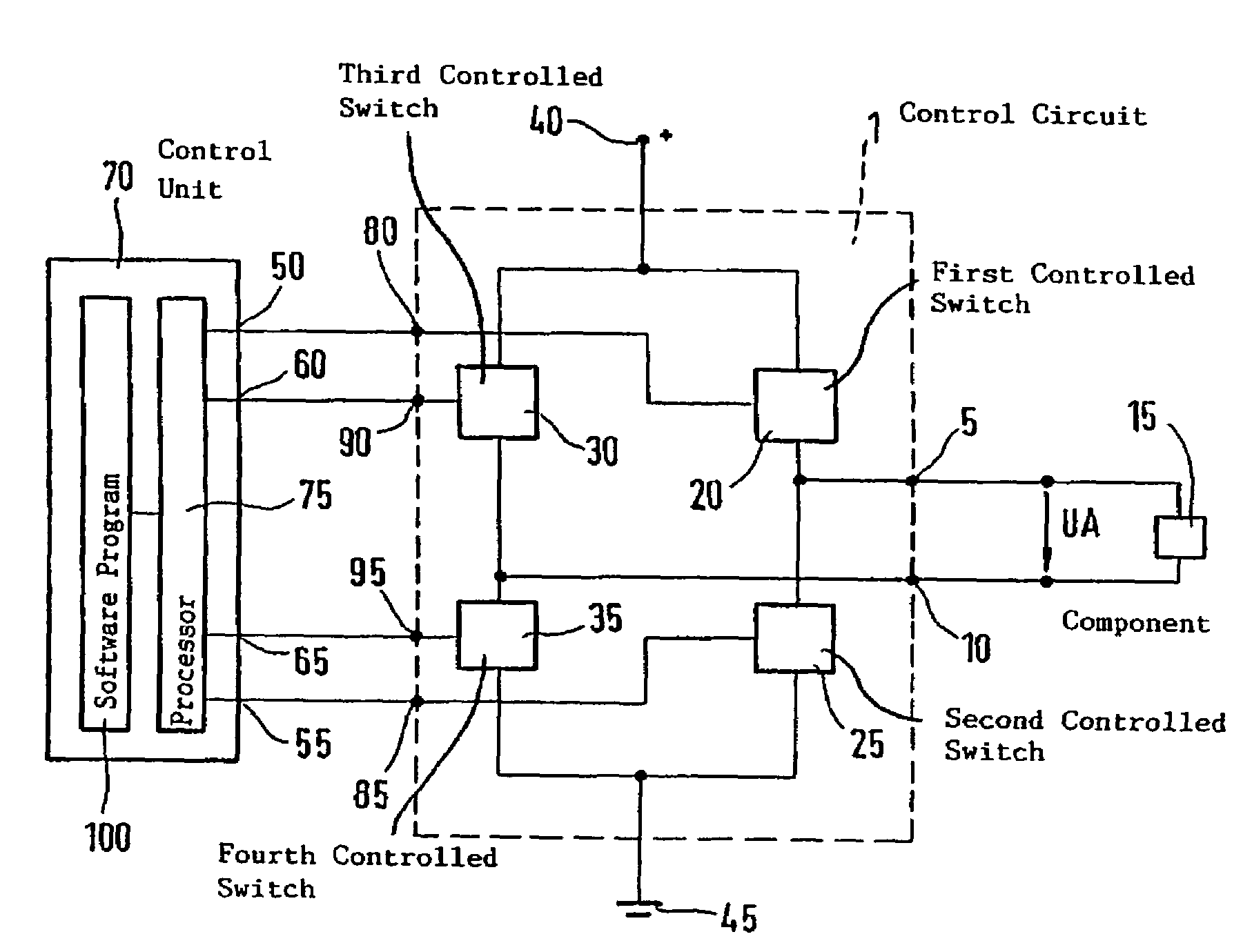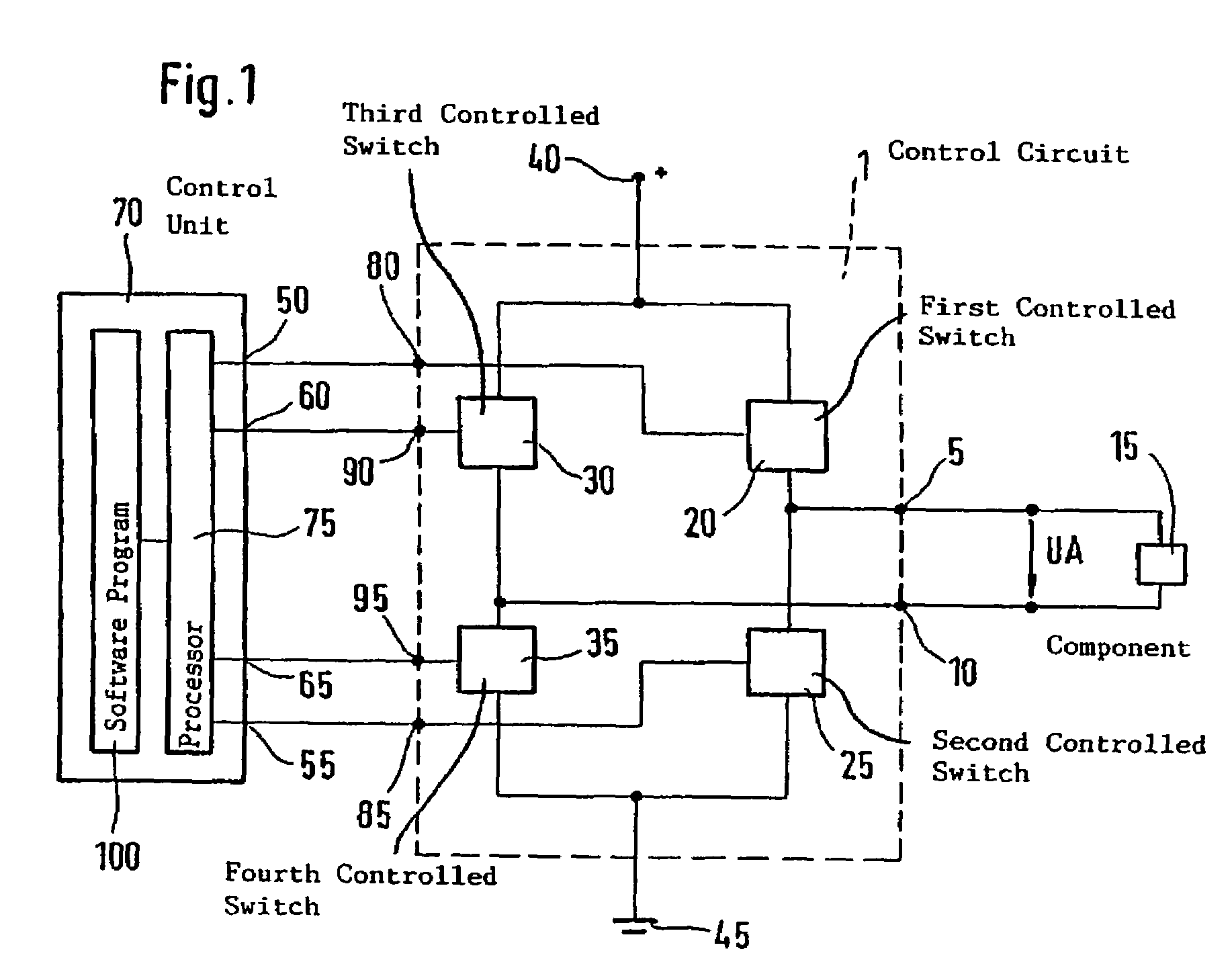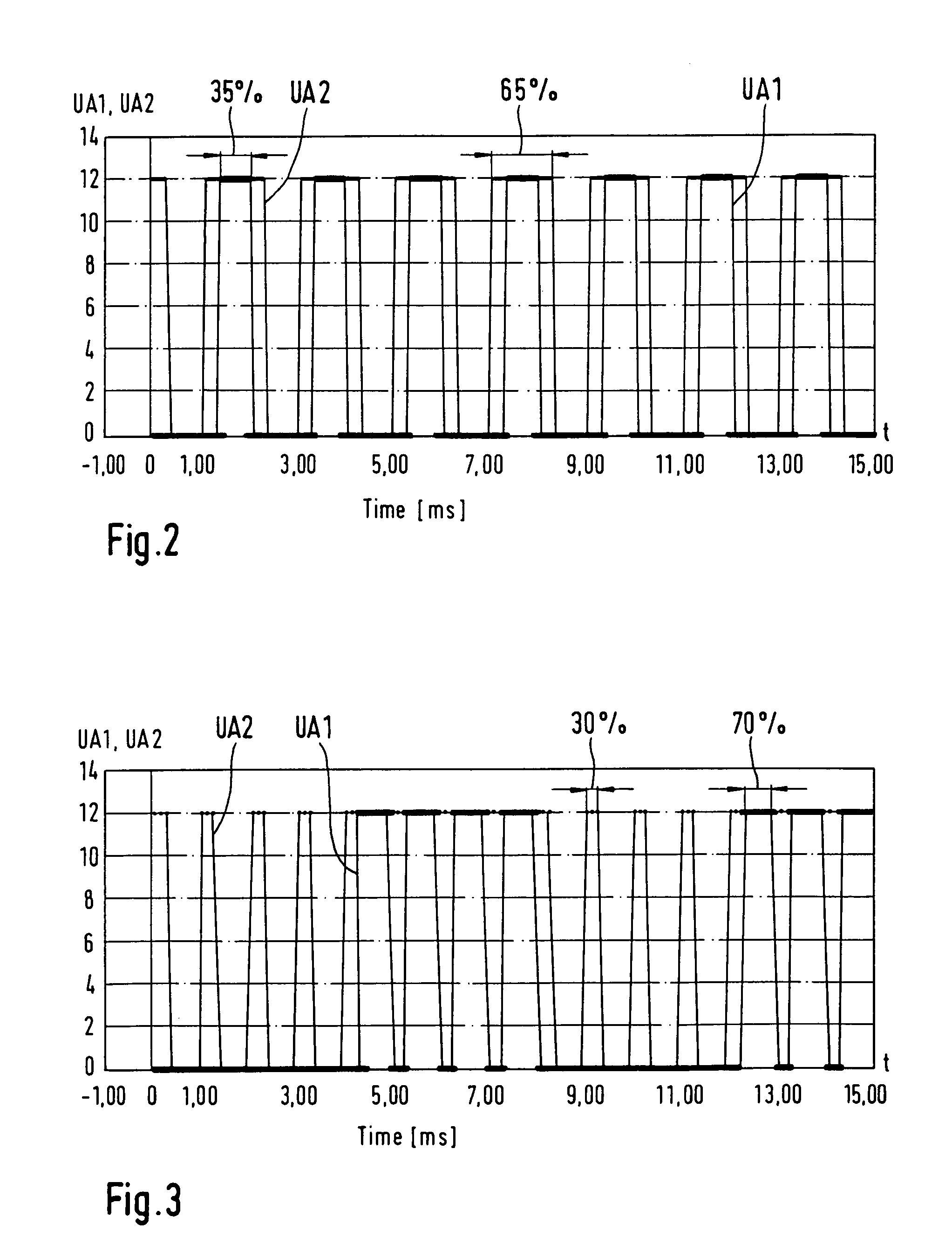Method and control unit for driving a control circuit
a control circuit and control unit technology, applied in the direction of dc motor rotation control, switch power arrangement, instruments, etc., can solve the problem of little thermal capacity to absorb high loads
- Summary
- Abstract
- Description
- Claims
- Application Information
AI Technical Summary
Benefits of technology
Problems solved by technology
Method used
Image
Examples
first embodiment
[0022]The first output signal UA1 results at the first input 5 with the frequency 500 Hz and the drive contact rate of 35% in correspondence to the drive signal at the first input (80, 85). In correspondence to the drive signals at the second input (90, 95), the second output UA2 having the frequency of 500 Hz and the drive contact rate of 65% results at the second output 10. The two output signals (UA1, UA2) also have the coincident symmetry axes described for the input signals. The two output signals (UA1, UA2) are shown in the signal diagram of FIG. 2. If one forms the difference (UA2−UA1) from the two periodic output signals (UA1, UA2), then the drive voltage UA (which is shown in FIG. 4) results at a frequency of 1 kHz and the drive contact rate of 30%. With this first embodiment of the invention, both controllable switch means (20, 25; 30, 35) are alternately switched so that the generated power loss and therefore the heat is distributed over both switchable switch means (20, ...
second embodiment
[0023] the processor 75 is so set that it generates a drive signal with a drive contact rate of 70% and a frequency of 1 kHz at the first input (80, 85). This drive signal for the first input (80, 85) is generated by the processor 75 in a first operating mode. In this first operating mode, the second input (90, 95) is continuously held at “high”. In this way, the first output signal UA1 having a drive contact rate of 70% results at the first input 5 corresponding to the drive signal at the first input (80, 85) while, in contrast, the second output signal UA2 at the second output 10 lies continuously at “high”. In the difference (UA2−UA1) of the two output signals (UA1, UA2), there results again the pregiven drive voltage UA having a drive contact rate of 30% and a frequency of 1 kHz. In a second operating mode, the processor 75 generates a drive signal at the second input (90, 95) which has a drive contact rate of 30% with a frequency of 1 kHz. At the same time, the first input (80,...
PUM
 Login to View More
Login to View More Abstract
Description
Claims
Application Information
 Login to View More
Login to View More - R&D
- Intellectual Property
- Life Sciences
- Materials
- Tech Scout
- Unparalleled Data Quality
- Higher Quality Content
- 60% Fewer Hallucinations
Browse by: Latest US Patents, China's latest patents, Technical Efficacy Thesaurus, Application Domain, Technology Topic, Popular Technical Reports.
© 2025 PatSnap. All rights reserved.Legal|Privacy policy|Modern Slavery Act Transparency Statement|Sitemap|About US| Contact US: help@patsnap.com



